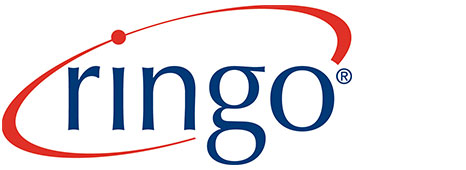Pillar Page
Clinical Workforce Management
Recruit, Schedule, Manage, and Retain Healthcare Professionals
Contact UsIntroduction
What is Clinical Workforce Management?
Clinical workforce management encompasses the strategies, tools, and technologies used to recruit, schedule, manage, and retain healthcare professionals in both clinical and non-clinical roles. These roles include locum tenens physicians, nurses, allied health professionals, administrative staff, and support personnel. Effective workforce management ensures optimal staffing levels, regulatory compliance, and cost control while meeting the needs of patients and staff.
Solutions
Key Features a Healthcare Workforce Management Platform Should Provide
Recruitment and Credentialing Management
- Streamlined Hiring Process: Simplify the recruitment of clinical and non-clinical staff with automated workflows for job postings, applicant tracking, and offer management.
- Credentialing and Compliance: Ensure all hires meet licensing, certification, and training requirements through integrated credentialing tools and automatic alerts for expirations.
- Vendor Management System (VMS) Integration: Centralize staffing agency interactions for temporary and contingent workforce needs.
Scheduling and Shift Optimization
- Dynamic Scheduling: Provide real-time visibility into staff availability and optimize shift assignments to reduce overtime and avoid understaffing.
- Shift Bidding and Marketplace Features: Allow staff to bid for shifts or select opportunities that match their preferences and availability, increasing engagement.
- On-Call and Float Pool Management: Efficiently manage backup staff to cover unexpected absences and high-demand periods.
Time and Attendance Tracking
- Automated Timekeeping: Reduce errors with digital timecards and geolocation-based clock-ins for on-site and remote staff.
- Compliance Monitoring: Ensure adherence to labor laws, union agreements, and organizational policies with built-in tracking and alerts.
Cost Control and Financial Management
- Expense Tracking: Monitor and manage costs related to contingent labor, overtime, and shift differentials.
- Budget Forecasting: Use predictive analytics to anticipate staffing needs and budget allocations.
- Consolidated Billing: Streamline payments with single invoices that aggregate multiple vendors and staff types.
Data Analytics and Reporting
- Customizable Dashboards: Provide administrators with real-time insights into workforce metrics such as utilization, turnover rates, and costs.
- Predictive Analytics: Leverage data to forecast staffing needs, predict patient volume trends, and prevent burnout.
- Regulatory Reporting: Automate the generation of compliance reports for accreditation bodies and government agencies.
Regulatory Compliance and Risk Management
- Real-Time Compliance Tracking: Monitor staff credentials, certifications, and training to meet federal, state, and local regulations.
- Incident Reporting Tools: Manage and document workplace incidents to ensure accountability and transparency.
Staff Engagement and Retention Tools
- Professional Development: Offer opportunities for upskilling and continuing education through integrated learning management systems.
- Feedback Mechanisms: Use surveys and feedback tools to gauge employee satisfaction and address concerns proactively.
- Wellness Programs: Provide resources and support to enhance staff well-being and reduce burnout.
Clinical vs Non-Clinical
How Workforce Management Platforms Cater to Both
While clinical roles like locum tenens physicians, nurses, and allied health professionals have unique demands, non-clinical roles also require attention to ensure smooth operations. Here's how workforce management platforms can cater to both:
Clinical Roles
- Locum Tenens: Seamlessly manage temporary physician staffing with automated contract handling and scheduling.
- Nurses: Optimize shift planning to avoid burnout and maintain nurse-to-patient ratios.
- Allied Health Professionals: Ensure specialized roles, such as therapists and technicians, are adequately staffed and compliant.
Non-Clinical Roles
- Administrative Staff: Streamline hiring and scheduling to support the operational backbone of the organization.
- Support Personnel: Ensure availability of janitorial, food service, and maintenance staff to maintain patient satisfaction.
Conclusion
Why Choose a Comprehensive Workforce Management Platform?
A unified workforce management platform eliminates inefficiencies, improves staff satisfaction, and ensures optimal patient care. By leveraging technology to address recruitment, scheduling, compliance, and analytics, healthcare organizations can adapt to changing demands and thrive in today’s dynamic environment.
Ringo VMS is a leader in healthcare workforce management technology. With an intuitive platform designed to address the unique challenges of clinical and non-clinical staffing, Ringo offers:
- Tailored user experiences
- Customizable dashboards with exportable metrics
- Integration capabilities for seamless operations
- Dedicated customer support with above-industry NPS scores
Discover how Ringo can transform your workforce management strategy.

